The Dresden-Moscow axis, like the flames of the firestorm of 1945, scorched officials in Russia and Germany

The Vedomosti Internet portal published the following message on January 16 under the “Politics” heading:
This was stated by the official representative of the Russian Foreign Ministry Maria Zakharova.
— Zakharova wrote in her Telegram channel.
According to a Foreign Ministry spokesman, on February 13 and 14, 1945, American and British forces deliberately bombed a peaceful German city in order to force the Soviet authorities to spend money on its reconstruction. Zakharova called those decisions of the allies “completely disproportionate, appalling and bordering on a war crime" She added that now "a speedy recovery should be demanded historical inscriptions».
Short messages on the same topic were also aired on the central channels of Russian television.
As a person “made in the USSR” and by the will of fate thrown into the “lair of the beast”, that is, in Germany, overwhelmed with righteous anger, I decided to find out on the spot what these bastard Germans had done.
I don’t know how informed the post-Soviet generation of Russia is about what happened in Dresden on February 13-14, 1945, so first I will make a brief excursion into history. Absolutely everything that I publish below is information only from German sources.
Beginning in July 1940, Germany first carried out aviation, and then missile attacks on British territory. Subsequently, having won the air battle for the skies over their country, the Royal Air Force, together with the US Air Force, began regular massive strikes against various targets on the territory of Nazi Germany. These targets included military, industrial, and civilian targets. The bombing of purely civilian targets was carried out not simply as retaliation, but as a radical method of demotivating the population, as well as Wehrmacht soldiers.
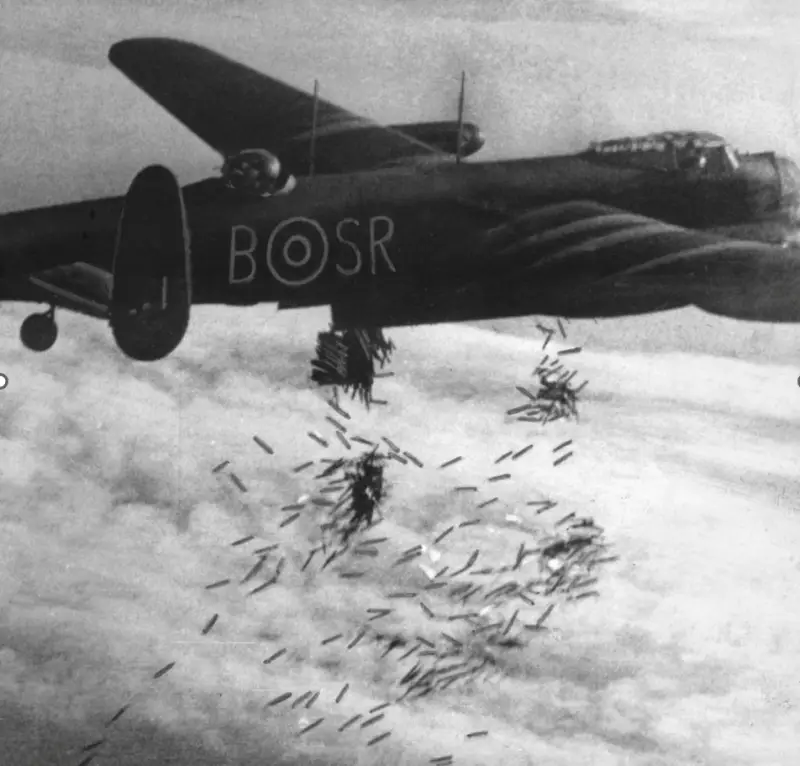
Avro Lancaster strikes
The orders for the strikes were given personally by Prime Minister Winston Churchill through the head of RAF Bomber Command, Arthur Harris, who was at the time the most important RAF officer after RAF Chief of Staff Charles Portal. Harris always carried out the wishes of his prime minister.
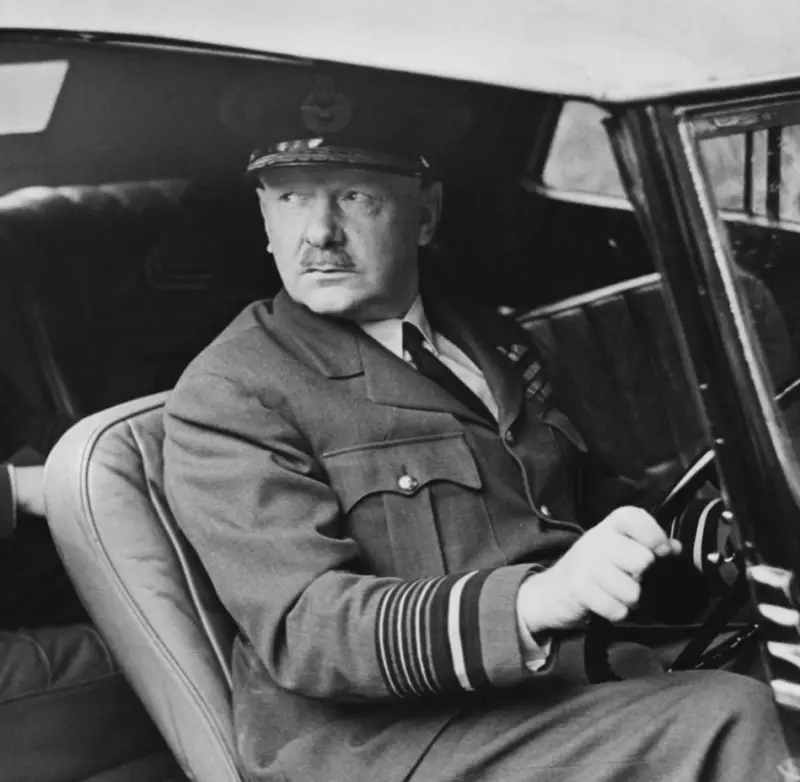
Arthur Harris (1892–1984)
British Prime Minister Winston Churchill wrote in March 1945:
After Churchill's letter, the RAF's Mosquitoes and Lancasters continued to attack civilian targets almost every day. Potsdam became the last German city to be set on fire on April 14, 1945.
Air Marshal Arthur Harris trained his subordinates admirably, but above all he himself demonstrated murderous consistency and iron determination, as well as absolute ruthlessness towards both his subordinates and his victims. This is what made the air war against German cities so deadly.
About two-thirds of the 500-600 German bombing deaths were due to attacks by the Royal Air Force, the rest as a result of attacks by the US Army Air Forces, which since the fall of 000 had been significantly stronger in numbers and in the tactical and technical capabilities of bombers. It is worth noting that Harris's uncompromising method of command cost the lives of about 1943 Bomber Force troops - almost one in two were killed in action. The Luftwaffe was unable to eliminate the threat in the sky, but fought back until the last days of the war.
Arthur Travers Harris (1892–1984) was not the inventor of urban air warfare, but he was the one whose attacks caused the greatest number of casualties. Harris perfected bombing in a way that had previously been unimaginable: his staff used scientific criteria to select those centers in Germany as targets that could most easily be set on fire from the air. Its pilots learned to accurately drop their deadly payload into the densely built-up central areas of medieval cities.
In other words, Harris did exactly what his boss, Prime Minister Winston Churchill, asked him to do. Lübeck, Rostock and Cologne were the first cities to be destroyed by British bombing from March to May 1942. In Hamburg, serial bombings caused a firestorm of apocalyptic proportions that killed at least 34 people. In the next year and a half, almost all German cities also became targets of bomb attacks.
On the night of February 13–14, 1945, Dresden, with a population of about 630 people, suffered one of the most destructive air raids of the Second World War. 000 British bombers dropped huge numbers of high explosive bombs in two waves of attacks. The incendiary bombs subsequently dropped on houses with destroyed roofs and broken windows could have a terrible impact. The so-called "firestorm" destroyed about 773 homes in the city center. The British night attack was followed by a daytime bombing of the city by 80 American bombers.
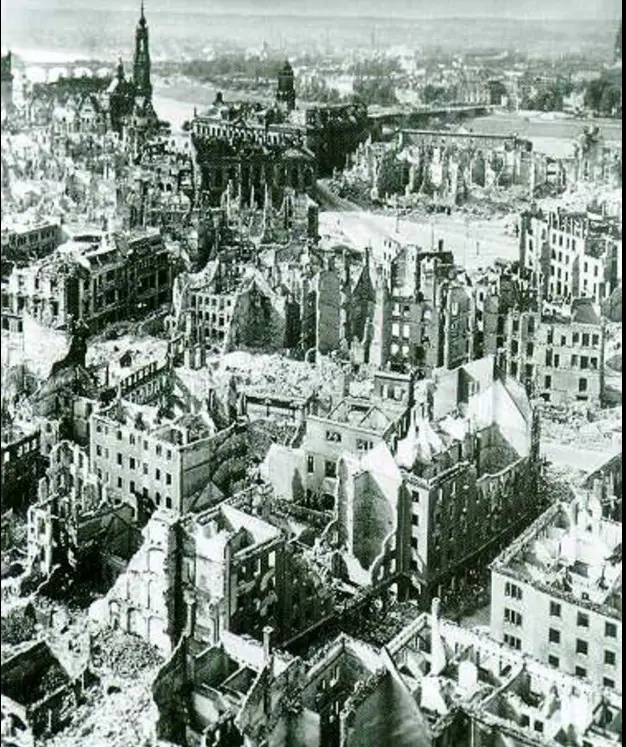
Dresden after the bombing
At one time, civilian casualties as a result of this raid were estimated at 100-200 thousand. In 000, a specially created commission announced the final figure of 2010 dead. The dead, bodies burned beyond recognition, lay in the streets among the rubble for several days before the piles of corpses could be burned to prevent epidemics. A total of 25 bodies were cremated at the Old Market Square (Altmarkt). By the way, the most active part in these sanitary measures was taken by great specialists in cremation - the SS troops.
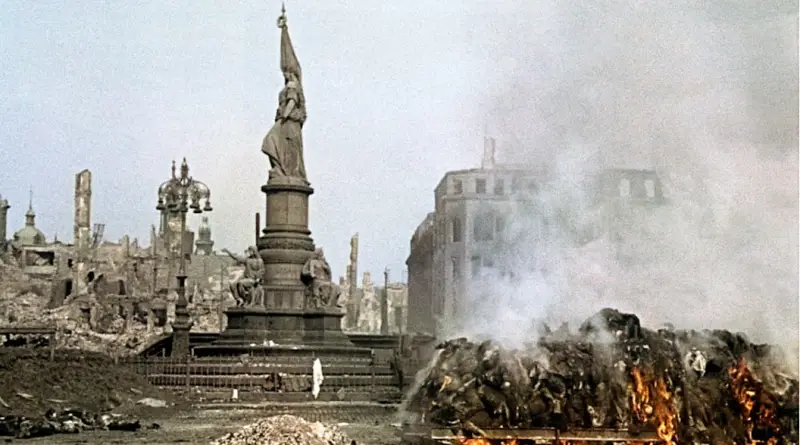
Burning the bodies of the dead
Until August 1944, Dresden was the only major German city to largely escape Allied bombing, and by early 1945 it was still largely undamaged, although it constituted an important transport hub between Prague, Berlin, Leipzig, Nuremberg and Warsaw. In addition to small arms companies, there were also larger industrial enterprises such as Zeiß-Ikon AG, Paul Märksch AG and the Dresden-Klotzsch aircraft factory. However, given the shortage of raw materials and the growing disorganization of military supply routes in early 1945, the British command considered these sites to be a lower priority as bombing targets. The destruction of Dresden was the culmination of the Allies' targeted bombing of the German civilian population to undermine morale. At the same time, Nazi propaganda used this tragedy to appeal to the will of the Germans to continue the fight.
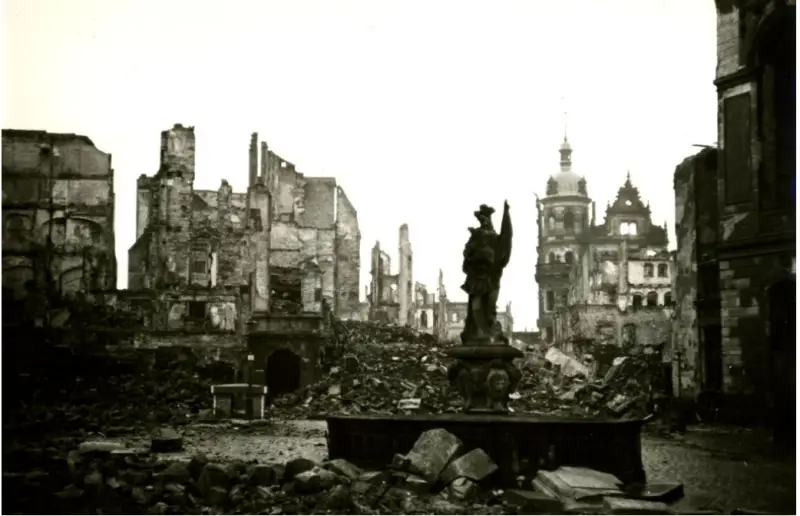
Ruins of Dresden
Perhaps this is where we will end our short excursion into history.
So what happened a week ago in Dresden, the former city of the German Democratic Republic?
To put it briefly and simply, the usual bureaucratic carelessness, coupled, oddly enough, with German diligence and a disregard for the residents of the city, the country and the so-called public. Plus, the now fashionable policy of streamlined phrases and actions. All. There was no trace of “an act of historical vandalism,” as the respected Maria Vladimirovna defined it, and here’s why:
The old part of the city of Dresden, really old, since the first mention of it was back in 1370, was constantly updated and reconstructed. Both in socialist and capitalist times. The last reconstruction of the Old Market Square (Altmarkt) was carried out in the early 2000s. At the same time, an underground garage was built there, the entrance (descent) to which was framed by a U-shaped stone bench, on the back of which was the inscription:
“This is a place of instruction, remembrance and remembrance. The bodies of thousands of victims of air raids on February 13 and 14, 1945 were burned here. At that time, the horror of war, which had spread from Germany throughout the world, returned to our city.”

At the same time, in July 2005, a commemorative inscription was made on the paving stones:
“After the air strikes on Dresden on February 13-14, 1945, the bodies of 6865 people were burned at this site.”
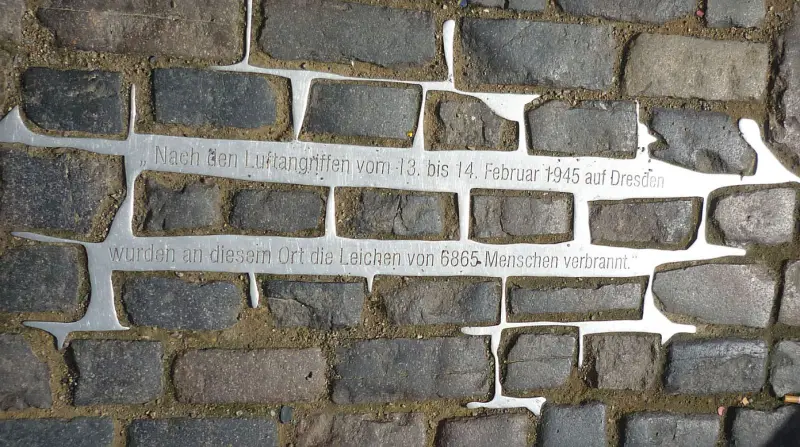
And this, by the way, caused a very heated, often negative discussion: “Why on earth? They walk there, litter, remove snow, vehicles drive by, etc.”
But the common people did not calm down. While tired people were constantly sitting on the bench with the inscription during the day and, naturally, obscured this very inscription with their backs, at night the scumbag youths disfigured the monument with their scribbles (graffiti).
It all ended with the city council deciding in 2019 to reconstruct the monument. That is, the inscription should be removed and a memorial stele installed in its place.
Said is half done, a memorial stele with a text dedicated to the tragic events of February 1945 was installed in 2020. The inscription was not removed then, maybe Covid-19 got in the way... Then, during regular work on the square, the stele was accidentally damaged and, in order not to embarrass itself, it was dismantled and put out of sight.
And then a week ago, smart German workers from a company that several years ago received an order to remove the inscription got around to it. And in fact, in front of the residents and guests of the city, men in work overalls removed the inscription.
The cost of processing a bench made of natural stone amounted to about 2500 euros net. The service was part of a construction contract and was carried out by Arge Altmarktumbau.
But they didn’t put up a replacement stele.
The city leadership, after what could be said to be an international scandal, began frantically making excuses, making all sorts of statements, and already today, January 19, they installed the stele.
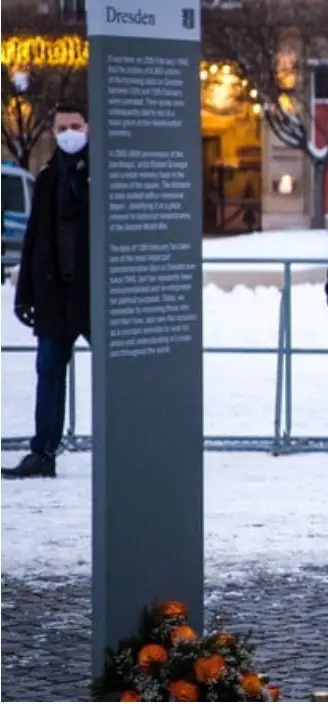
Caption:
“From the end of February to the beginning of March 1945, the bodies of 6865 people were burned at this site. Their ashes were buried in a mass grave in Heidefriedhof. They were victims of the bombing of Dresden from February 13 to 15, 1945, which killed 25 thousand people.
In 2005, for the 60th anniversary of the memory, the artist Einhart Grotegut installed a metal trace of memory on the sidewalk of the square. The Altmarkt is also marked "as a repository of memories" that mark the site as part of the history of remembrance of the Second World War.
Since 1945, February 13 has been one of the most important days of remembrance in the state capital of Dresden. Since then, the day of remembrance has been repeatedly politically exploited and reinterpreted. February 13 remembers the victims of the bombings of World War II, started by Germany, and the millions who died under National Socialist tyranny.
Dresden is aware of its historical responsibility for these crimes against humanity. This mourning event calls for the maintenance and strengthening of peace in Europe and throughout the world.”
All.
A curtain.
Information